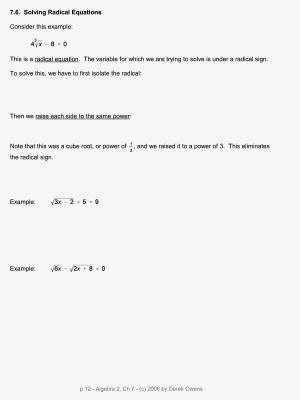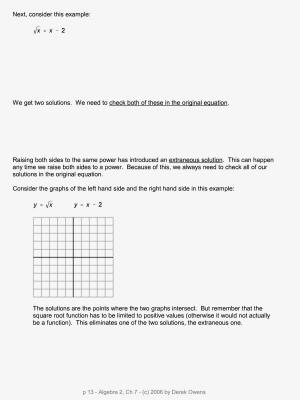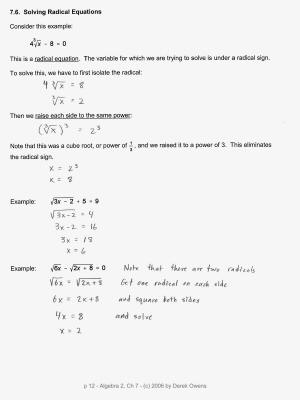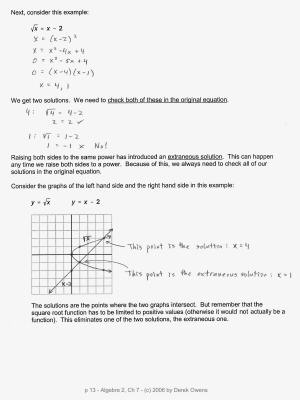|
|
|
Sample Lecture Notes
|
Each student receives their own copy of the lecture notes. The student copies have key material
deleted and replaced with blank space on the page. During the lecture, the students fill in the
blank space as they solve problems and take notes. The students therefore learn by listening to
the lecture, seeing the problems worked, reading the notes, and writing down concepts and solutions
to problems.
|
Sample Notes:
These notes are from Chapter 7 of the Algebra 2 class. A video of the lecture that corresponds
to these notes can be found here: Sample Video (Algebra 2, Chapter 7).


|
During the lecture, the student takes notes, works problems, and fills in
the gaps. At the end of class, the notes look something like this:
|


|
Five to ten pages of notes might get covered in a typical class period, perhaps more
or less depending on the difficulty of the material.
|
How the Lecture Notes Work
The lecture notes in this format accomplish several things:
- The student is free to think and learn.
Much of the verbage of a given lecture is printed on the page for the students.
The student therefore does not have to worry about transcribing every word of
the lecture as the instructor teaches. They are free to think
about the material and the concepts being covered.
- Attention and Focus
The lecture notes help the students pay attention and stay focused. They
have been particularly helpful for students who are otherwise easily distracted.
During a given lecture, the student will typically alternate several times
between listening to the lecture, reading, and writing on the page.
The students' attention span rarely gets exhausted on a single activity.
- Multiple Modes of Learning
People learn by watching, by listening, by reading, and also by writing.
Most of the lectures contain numerous elements of all of these modes of learning.
The students hear the material explained; they watch example problems being
worked; they read the material; they work out example problems on their own.
- Computer Videos
The videos of the lectures on the computer CD's are essentially the same
as those delivered in class. They correspond exactly to the notes on the printed
page. If a student misses class, he or she can still receive the same lecture
by watching the video on computer and filling in the notes as the
material is explained. This is precisely how a distance learning student
covers the material without attending class. The videos are, of course,
also helpful for review purposes. If a student is having trouble with a
a particular concept, he can review the explanations as many times as desired.
You can view the sample videos that match the lecture notes on this page by
clicking here: Sample Video (Algebra 2, Chapter 7)
- Study Material
The lecture notes are an excellent source of material when the student is
studying for the test.
By the end of the year, the students will have a large collection of lecture
notes and sample problems that they themselves have helped create. This serves
as review material for the final exam. It can also be a reference that the
student may wish to keep and consult later for review purposes or when preparing
for college entrance exams.
|
|
|
|
|
